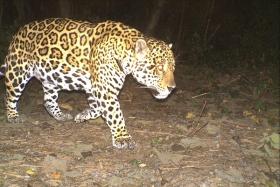Task force on human-wildlife conflict set up in Kenya
Posted on
|
The Kenyan government has set up a task force to look into ways to deal with human-wildlife conflict and clashes between ranchers and communities. The task force is expected to make recommendations on game farming and game ranching. It will evaluate its contribution to Kenya’s GDP, and food security. The Kenya Wildlife Service is busy dealing with cases of poaching and wildlife trafficking, but also cases of human-wildlife conflict. Pastoral communities have invaded private ranches as they look for pasture. So the task force is expected to come up with solutions to human-wildlife conflict which will last, and also safeguard game parks, community and private land. It is aiming to create a peaceful co-existence between communities and wildlife. Visit the Kenya Wildlife Service to find out more about their work. |
